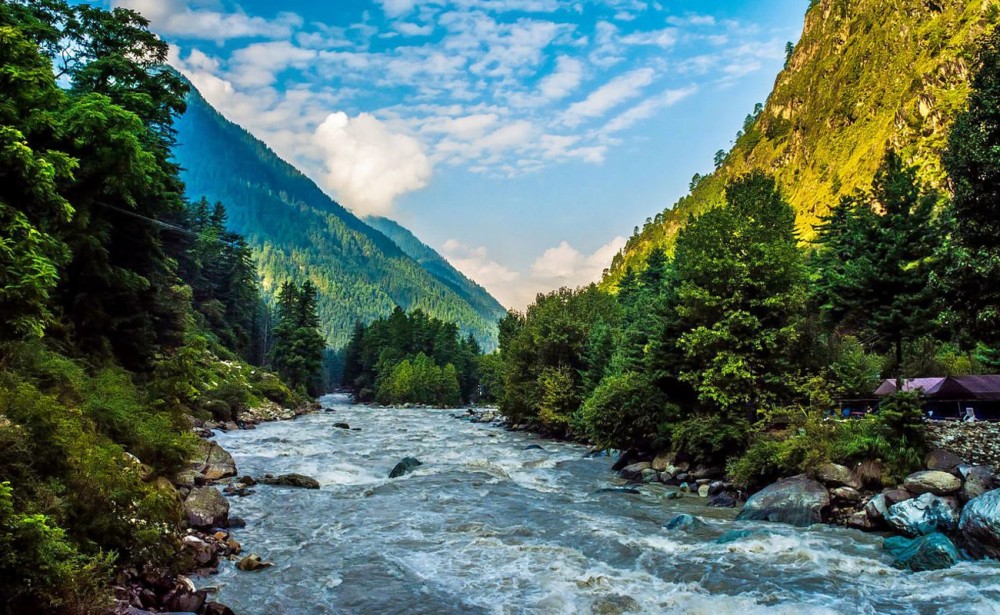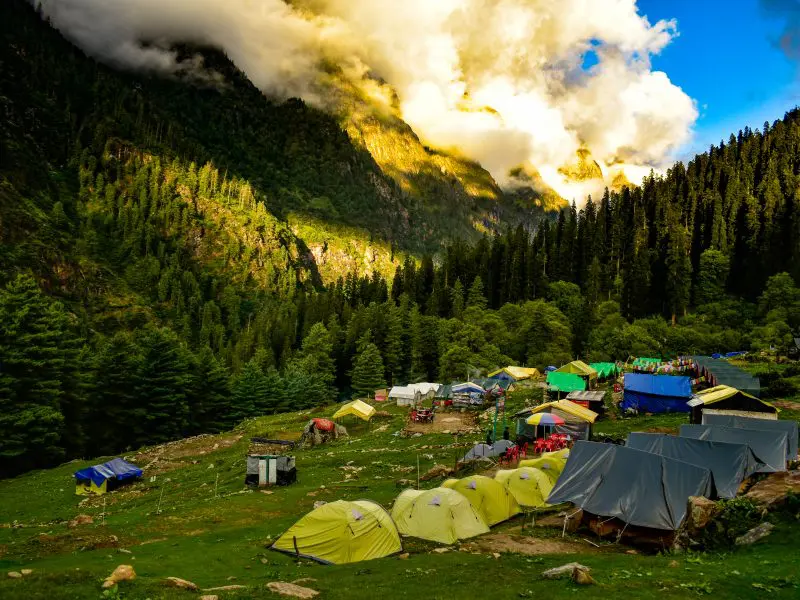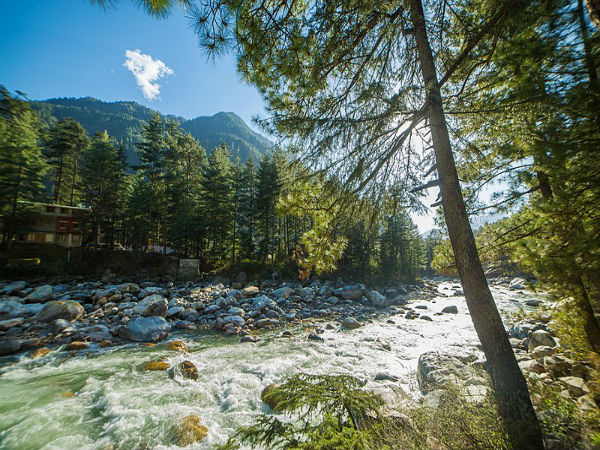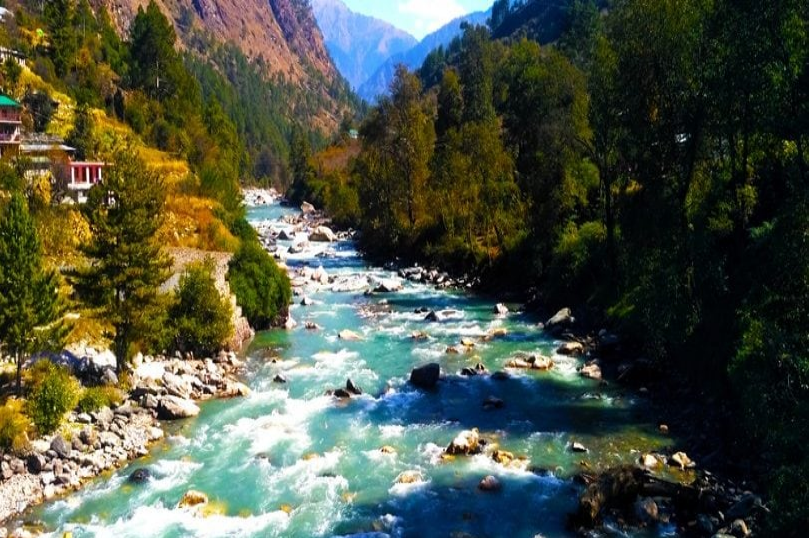


Parvati Valley is a scenic valley located in the Kullu district of Himachal Pradesh, India. It is named after the Parvati River, which flows through the valley and is a tributary of the Beas River. The valley is surrounded by snow-capped mountains, lush green forests, and picturesque villages, making it a popular destination for trekking, hiking, and camping.
The valley is known for its natural beauty, rich cultural heritage, and spiritual significance. It is believed to be the abode of Lord Shiva and Goddess Parvati according to Hindu mythology, and there are several ancient temples and shrines dedicated to them in the valley.
The valley is also known for its vibrant and hippie culture, with several small villages and towns offering a range of accommodation options, cafes, restaurants, and shops selling locally made handicrafts and souvenirs. Some of the popular tourist attractions in Parvati Valley include the Kheerganga trek, Malana village, Tosh village, and the hot springs at Manikaran.

The history of Parvati Valley is deeply intertwined with the mythological and cultural history of the region. According to Hindu mythology, it is believed that the valley was once the abode of Lord Shiva, one of the principal deities of Hinduism. It is said that Lord Shiva meditated in the Parvati Valley for several years, and his consort, Parvati, is also associated with the valley.
In more recent history, the Parvati Valley has been a popular destination for spiritual seekers, backpackers, and adventure enthusiasts. In the 1970s, the valley became a hub for hippie culture, with many Westerners traveling to the region to explore its natural beauty and engage in spiritual practices such as yoga and meditation.
Over the years, the valley has also become a popular destination for trekkers and mountaineers, with many challenging routes and peaks to conquer. The region has also been the site of various ecological conservation efforts, including the preservation of its rich biodiversity and the promotion of sustainable tourism practices.
Today, the Parvati Valley continues to attract visitors from all over the world, who come to explore its stunning natural beauty, engage in spiritual practices, and enjoy adventure activities such as trekking, mountaineering, and rafting.

Airways- The nearest airport to Parvati Valley is the Kullu-Manali Airport, also known as Bhuntar Airport, which is located about 50 km away from the valley. From the airport, one can hire a taxi or take a bus to reach Parvati Valley. The airport is well-connected to major cities like Delhi, Mumbai, and Chandigarh, with regular flights operated by airlines like Air India, SpiceJet, and IndiGo.
Railways- The nearest railway station to Parvati Valley is the Joginder Nagar Railway Station, which is located about 160 km away from the valley. From the railway station, one can hire a taxi or take a bus to reach Parvati Valley. However, the railway station is a narrow-gauge line and is only connected to a limited number of cities. Alternatively, one can take a train to Chandigarh Railway Station, which is a major railway station in the region, and then take a taxi or bus to Parvati Valley.
Roadways- Parvati Valley can be reached by road from nearby cities such as Kullu, Manali, and Bhuntar. The valley is connected to the rest of the country by National Highway 3 and can be reached by private taxis, buses, or rented vehicles. It is also accessible by trekking from nearby villages and towns.
The climate in Parvati Valley is generally pleasant throughout the year, but the best time to visit is from March to June and from September to November when the weather is mild and comfortable. During these months, the valley experiences moderate temperatures, clear skies, and minimal rainfall, making it ideal for outdoor activities such as trekking and hiking. However, the winter months from December to February can be extremely cold with heavy snowfall, and the monsoon season from July to August can be unpredictable with frequent landslides and road closures.
The ideal number of days to stay in Parvati Valley would depend on the kind of experience you want to have. If you're looking for a relaxing getaway, then 3-4 days would be sufficient to explore the main attractions and enjoy the natural beauty of the valley.
However, if you're an adventure seeker and want to indulge in activities like trekking, camping, and rock climbing, then you may want to stay for a longer duration of around 7-10 days. This will give you enough time to explore the different trekking routes, visit the nearby villages, and immerse yourself in the local culture.

Parvati Valley is a nature lover's paradise, with several picturesque spots that offer stunning views of the Himalayan mountains and the river flowing through the valley. Here are some of the top attractions to explore in Parvati Valley:
Kheerganga Trek: This is a popular trek that takes you through lush green forests, hot water springs, and scenic waterfalls before culminating at the Kheerganga meadow, which offers breathtaking views of the valley.
Tosh Village: Tosh is a small village located at an altitude of around 7,900 feet, and is known for its scenic beauty and peaceful surroundings. It is also a popular spot for trekking and camping.
Malana Village: Malana is a remote village known for its unique culture and traditions. It is believed to be one of the oldest democracies in the world and has its own distinct language and social structure.
Manikaran Sahib: This is a Sikh pilgrimage site located on the banks of the Parvati River. It is known for its hot water springs and is believed to have healing properties.
Rasol Village: Rasol is a small village that can only be reached on foot. It offers stunning views of the valley and is a great place to experience the local culture and lifestyle.
Pulga Village: Pulga is a small village located at an altitude of around 9,000 feet, and is known for its scenic beauty and peaceful surroundings. It is also a popular spot for camping and trekking.
Parvati River: The Parvati River is the lifeline of the valley and offers several spots for rafting, kayaking, and fishing. It is also a great place to relax and enjoy the scenic beauty of the valley.
Overall, Parvati Valley is a must-visit destination for those who love nature, adventure, and tranquility. The valley offers a unique blend of culture, spirituality, and natural beauty that is sure to leave you mesmerized.
Accommodation in Parvati Valley includes budget guesthouses, luxury resorts, backpacker hostels, and cozy guesthouses. Popular options include The Himalayan Village, Parvati Kuteer, The Hosteller Kasol, Jim Morrison Café and Guesthouse, and The Pahadi House. It is advisable to book accommodation in advance, particularly during the peak season from May to October.